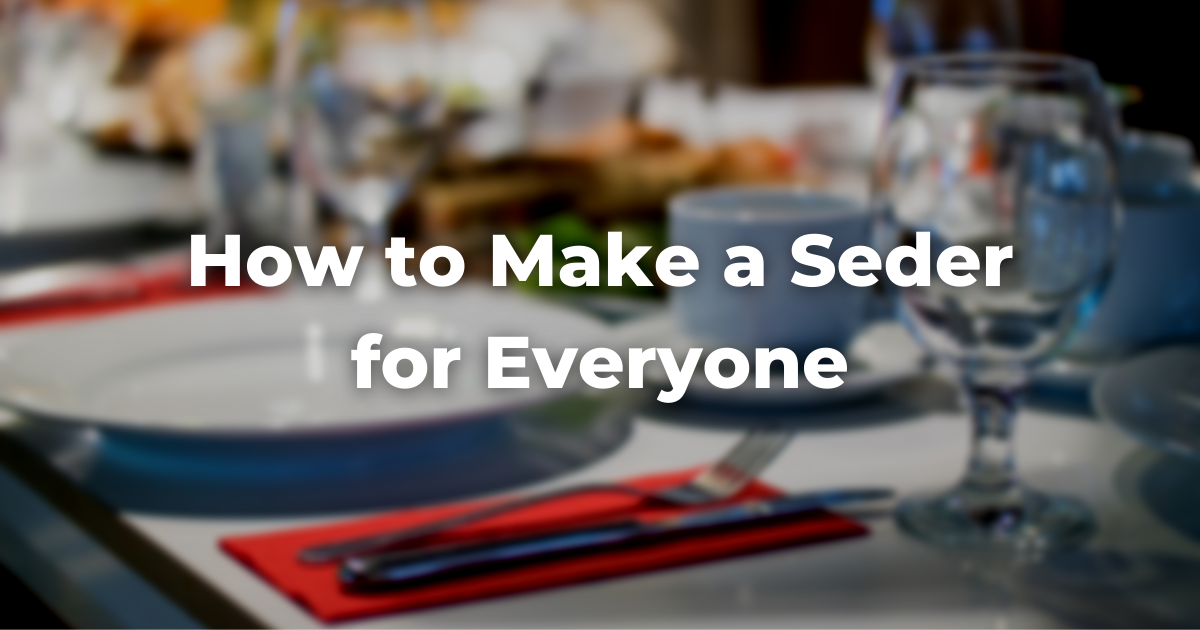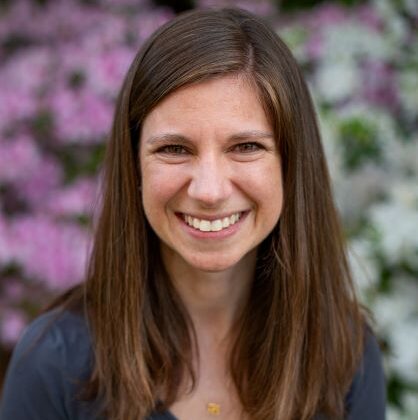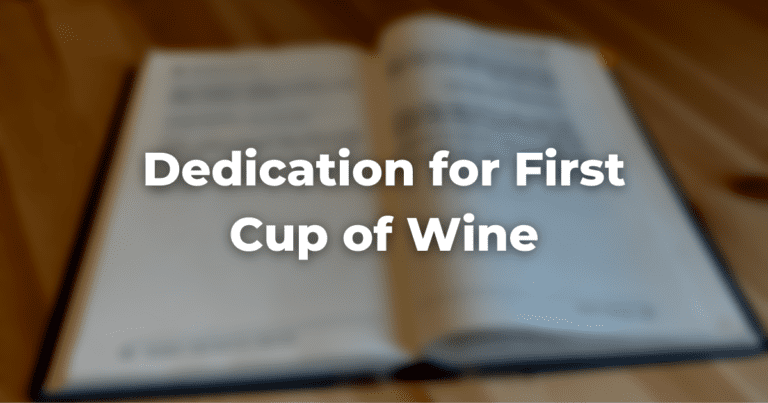This piece is part of Exploring Judaism’s 5784 Passover Reader. Download the whole reader here.
My all-time favorite seder – and my most diverse – was in 2014.
I was in rabbinical school at JTS, living in an intentional interfaith community of five women that we affectionately called “The Womb.” Our seder that year included all of my immediate family members (Jewish and Jewish-adjacent), a number of my Christian and Muslim roommates and their partners, and a bunch of rabbinical students and other Jewish friends.
I was a little nervous that this random group of folks would have a hard time blending – some of these people were deeply knowledgeable about the Passover seder traditions and others were experiencing seder for the very first time.
But of course, the story of Passover draws on universal human experiences and embeds them within particular Jewish language and rituals – and the haggadah itself tell us that this experience is meant to be highly personal and relatable:
“In each and every generation, a person is obligated to see themself as if they left Egypt, as it is stated; ‘And you shall explain to your child on that day: For the sake of this, did the Lord do [this] for me in my going out of Egypt.’ (Exodus 13:8)”
We all know something about attempting to leave behind hardship and constriction, even if we haven’t known literal slavery in our lives, and it’s that lived experience that the seder is trying to evoke.
At that particular seder, after the first cup of wine and the initial introductions, we spent an hour sharing stories of times when we too have experienced a sense of being stuck, trapped, enslaved as it were. I remember the story of one person feeling like their career was keeping them inside a never-ending hamster wheel, stuck trying to provide the same quality of life for their family in an increasingly impossible and unfulfilling job market.
Another person shared about their coming out experience and how they gradually had built a life where they could be seen fully as they saw themself.
Turns out, there were universal truths in these stories that everyone could relate to – and there was a palpable feeling in the room by the time we got to dinner that we had connected to something transcendent and universal. Even the lifelong seder attendees didn’t miss the parts of the seder we “skipped.” And the seder rituals that we did perform took on new resonance when seen through the lens of the stories that people shared.
So here are a few tips to think about as you’re planning your seder this year:
1. Define a bold purpose for your gathering.
The key to hosting a successful seder “for everyone”, as Priya Parker emphasizes in her book, The Art of Gathering, is to articulate a bold purpose in gathering. Not just to say “this is what we do every year at this time,” but to discern why you’re gathering right now. Or in other words – mah nishtanah halailah hazeh? What’s different about THIS particular night, this year? What’s bringing these particular people to your table?
Are you gathering because this particular group hasn’t seen each other in three years and everyone’s making it a top priority to reconnect in person? Is this night about creating or strengthening relationships? Or perhaps about helping your guests breathe new life into ancient rituals that have gotten a little stale?
And practically speaking – is your group adults-only, or are there kids and teens around the table? Are they comfortable reading and/or singing in Hebrew? What supports will make your seder accessible to everyone around your table?
Think about Hebrew and transliteration, sending recordings of songs you might sing out to everyone in advance so they can listen and prepare, and about setting expectations for your guests in advance for how long the seder will be and what they can do to prepare.
Knowing your purpose in gathering will help you make clearer decisions about what elements of the seder are essential to include and which parts you can skip over – see more on that below.
2. Map the journey that you want to take people on.
The seder can often feel like a jumbled collection of songs, rituals, and readings that don’t quite seem to flow, but if you look closely, the Haggadah spells out very clearly out the larger journey that it’s taking us on. Just before we bless the second cup of wine, the Haggadah writes:
“Therefore we are obligated to thank and praise…the One who made all these miracles for our ancestors and for us: the Holy One brought us out from slavery to freedom, from sorrow to joy, from mourning to celebration of a festival, from darkness to great light, and from servitude to redemption. And let us sing a new song before the Divine, Halleluyah!”
The arc of the seder takes on a journey beginning with our own moments of mourning and suffering and bringing us to a place of hope and possibility. You as a host might think about how you want to help your guests connect personally to that journey: perhaps through sharing personal stories of times when they’ve experienced that kind of transformation, or through bringing objects or symbols of that journey that have been meaningful to them.
3. Highlight the elements of the seder that spotlight the journey, and give yourself permission to gloss over or omit the parts that are less relevant.
The Haggadah text isn’t meant to be a script where every word must be followed – despite what you may think. Make time in advance of your seder to filter the readings and rituals through your bold purpose and see which ones best serve the purpose in gathering.
If you’re choosing a discussion-heavy seder, you might use the four cups as moments to prompt your guests to share a story or respond to a prompt – this “say-der” guide from R’ Amichai Lau-Lavie at Lab/Shul is a great starting point. During the extra-long maggid (storytelling) section, you might choose to depart from the haggadah altogether and tell the story of the Exodus by having each person add a line, one at a time.
Include the parts that feel most essential to you, and feel empowered to leave other rituals on the shelf for next time.
4. Share the load
It takes a team to pull off a seder, so enlist helpers in advance. If you’re going to be facilitating conversation at the table, make sure you’ve got a friend or family member who can be in charge of the food so you’re not scrambling to heat up the brisket right in the middle of conversation.
5. Take care of your guests: feed them along the way!
Nobody likes to be hangry during the seder; impatience and hunger put a real damper on deep conversation. After you say the blessing over karpas (parsley/green vegetable), feel free to serve copious amounts of vegetables and dips for your guests so they don’t starve.
As a seder host, the best thing you can do is to read the room along the way and be willing to pivot, as necessary – trust your gut and improvise as needed. May this year’s seder(s) be full of connection and deep insight, and may they ignite a spark toward liberation and transformation.
Author
-

Rabbi Lauren Henderson originally hails from Spartanburg, SC, and serves as the rabbi of Congregation Or Hadash in Sandy Springs, GA. She earned her BA from Rice University in 2009 in Religious Studies and History, and studied at the Pardes Institute in Jerusalem and the Ziegler School of Rabbinic Studies in Los Angeles before transferring to the Jewish Theological Seminary in New York. She was ordained from JTS in 2016 with an MA in MidrashThis word is used in two ways, as both a concept and a literature. As a concept, midrash is the expansive interpretation of biblical texts. The term is used to describe the practice of rabbinic interpretation. As a text, it refers to specific collections of interpretations, particularly from the third to ninth centuries in the Land of Israel and Babylonia. Plural: Midrashim
View all posts
Read more and a Certificate in Pastoral Care. Rabbi Lauren was part of the Jewish Emergent Network Rabbinic Fellowship at Mishkan Chicago from 2016-2018, and then served as Mishkan’s Associate Rabbi and Director of Family Learning and Spirituality from 2018-2020.






